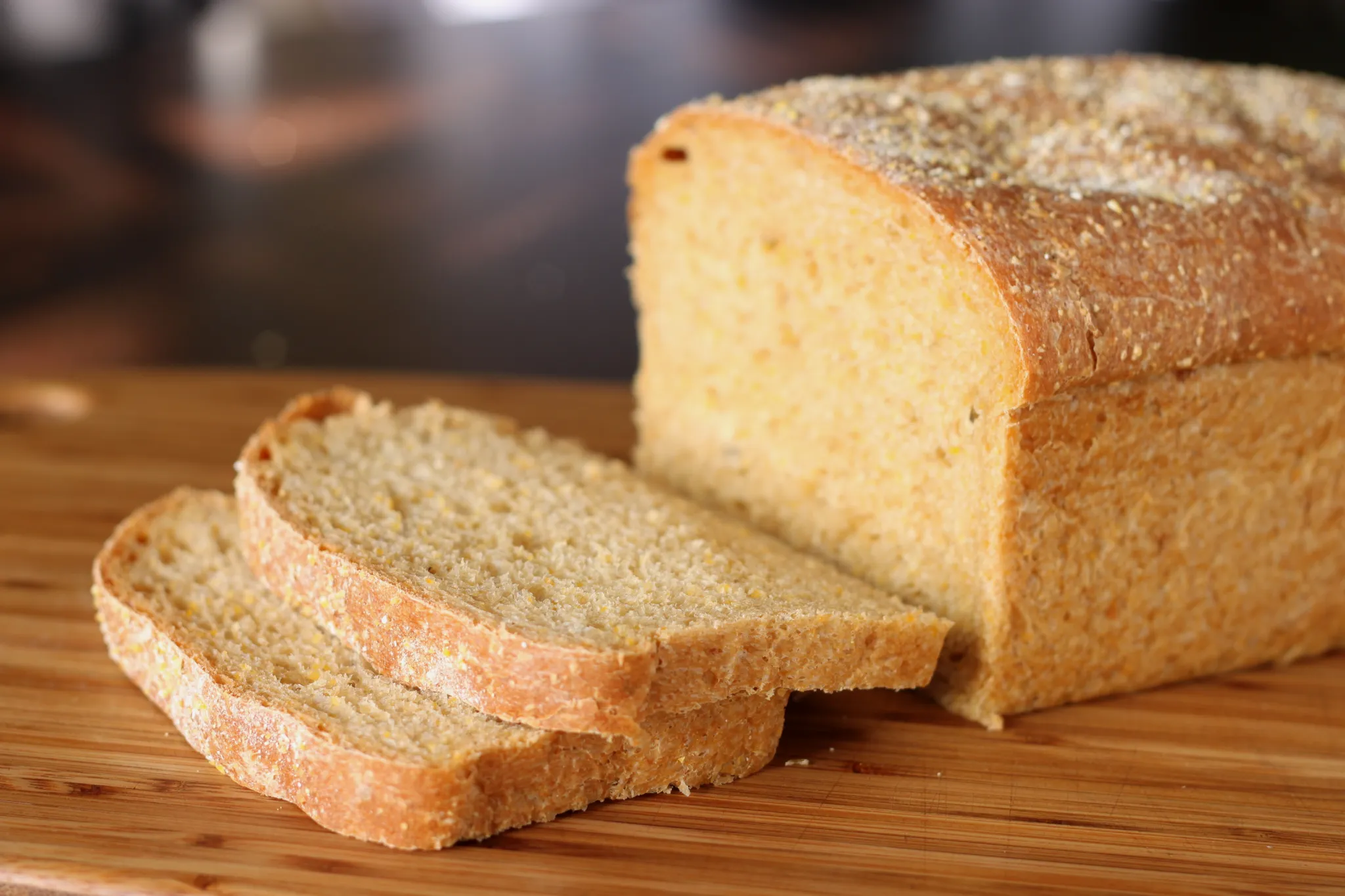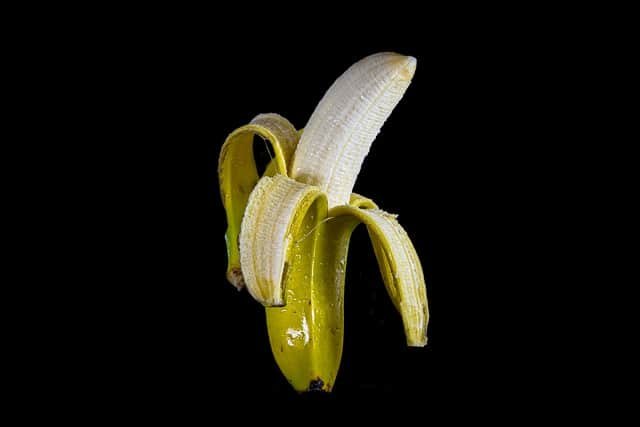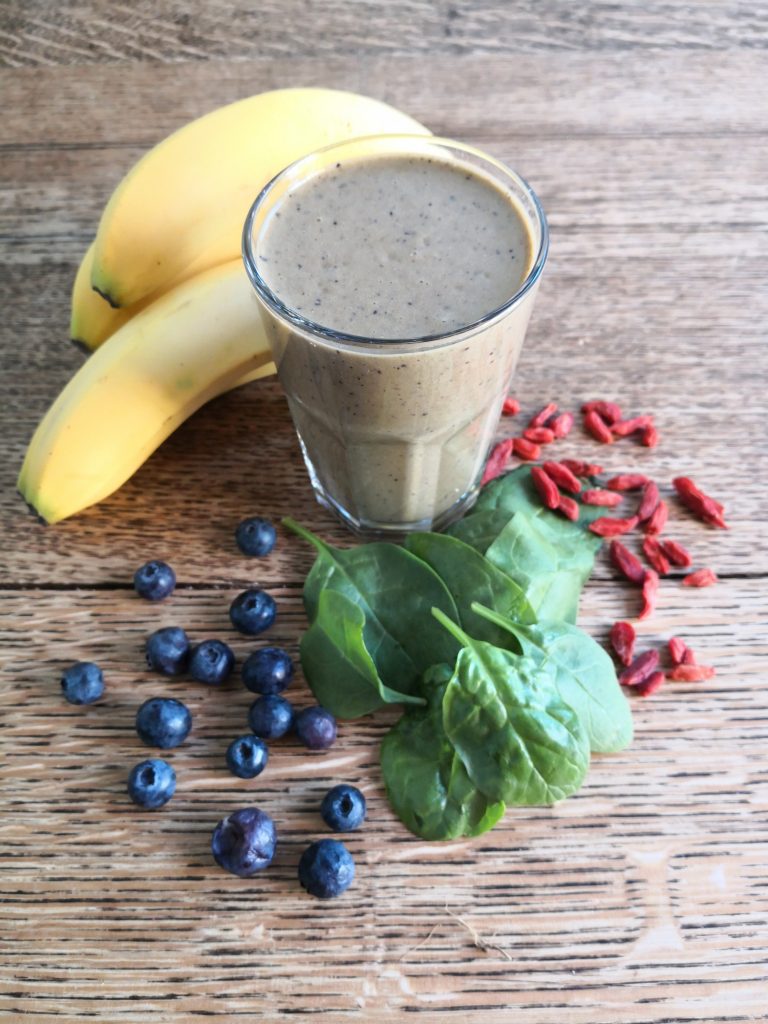
Are you tired of your banana bread turning out flat and dense at high altitudes? Look no further! In this article, we’ll share with you a foolproof banana bread recipe specifically designed for high altitude baking. Whether you’re a seasoned baker or a beginner, we’ve got you covered with simple and easy-to-follow instructions. Get ready to enjoy a moist and fluffy banana bread that will impress your family and friends, no matter how high up you are!
Baking at high altitudes can be a challenge, but with our tried and tested banana bread recipe, you’ll be able to achieve perfect results every time. We understand the frustration of having your baked goods turn out differently than expected due to the changes in air pressure and moisture levels. That’s why we’ve carefully adjusted the ingredients and baking techniques to ensure your banana bread rises beautifully and has the ideal texture. Get ready to elevate your baking game with this delicious high altitude banana bread recipe.
Understanding High Altitude Baking

When it comes to baking at high altitudes, there are a few important factors to consider. The lower air pressure at higher altitudes affects the baking process, resulting in some challenges. But fear not, with a few adjustments, you can still achieve delicious and fluffy banana bread even at high altitudes.
1. The Role of Altitude
At higher altitudes, the lower air pressure causes baked goods to rise more quickly and then collapse. This can lead to dense and dry banana bread. Understanding this phenomenon is key to making the necessary adjustments for a successful bake.
2. Adjusting Ingredients
To counteract the effects of high altitude baking, some adjustments to the ingredients are needed. Here are a few tips:
- Reduce leavening agents: Since the leavening agents (like baking powder and baking soda) work more efficiently at higher altitudes, it’s important to reduce their amounts slightly. This will prevent the bread from rising too quickly and then sinking.
- Increase flour: Adding a bit more flour will help absorb the excess moisture caused by the faster evaporation at higher altitudes, resulting in a moist and tender banana bread.
- Adding moisture: High altitude baking can dry out your baked goods, so consider adding a little extra moisture to the recipe. This can be done by increasing the amount of mashed bananas or adding a tablespoon or two of milk or yogurt.
3. Adjusting Baking Techniques
In addition to adjusting the ingredients, modifying the baking techniques can also make a difference:
- Reduce oven temperature: Lowering the oven temperature by about 25°F (14°C) can help slow down the rising process, allowing the bread to bake more evenly.
- Extend baking time: Since baked goods take longer to cook at higher altitudes, it’s important to extend the baking time. Keep a close eye on the bread and use a toothpick or cake tester to check for doneness. If it comes out clean or with a few crumbs, it’s ready to be taken out of the oven.
The Challenges of Baking at High Altitude
If you’re a baking enthusiast living at a high altitude, you may have experienced some difficulties in achieving the perfect loaf of banana bread. Baking at high altitudes can present unique challenges due to the lower air pressure and drier climate. But fear not! With a few adjustments to your recipe and techniques, you can create a deliciously moist and fluffy banana bread that will rise beautifully every time.
One of the main challenges of baking at high altitudes is the impact it has on leavening agents, such as baking powder and baking soda. At higher altitudes, the reduced air pressure causes these agents to work more quickly and vigorously, leading to over-rising and a collapsed center. To combat this, it’s important to reduce the amount of leavening agents in your recipe.
Another challenge is the need to increase the amount of flour in your banana bread batter. The lower air pressure at high altitudes affects the structure of the bread, making it more prone to sinking in the middle. By adding a bit more flour, you can provide extra support and stability to your loaf, resulting in a perfectly risen bread.

Moisture is also crucial when baking at high altitudes. The drier climate can cause your banana bread to become dry and crumbly. To counteract this, it’s recommended to add additional moisture to your recipe. This can be achieved by increasing the amount of liquid ingredients, such as mashed bananas, oil, or yogurt.
Lowering the oven temperature is another essential adjustment for high altitude baking. The lower air pressure means that baked goods can cook faster and become dry on the outside while still undercooked on the inside. By reducing the oven temperature slightly, you can ensure that your banana bread bakes evenly, resulting in a moist and tender texture.
Lastly, extending the baking time is necessary to ensure that your banana bread is fully cooked. The reduced air pressure at high altitudes slows down the baking process, so it’s important to give your bread a bit more time in the oven. Keep an eye on the loaf and test for doneness using a toothpick inserted into the center. If it comes out clean, your banana bread is ready to be enjoyed!
By understanding and making these adjustments, you can overcome the challenges of baking at high altitudes and create a delectable banana bread that will impress your friends and family. So, don’t let the altitude hold you back from baking your
Tips for Adjusting Your Banana Bread Recipe
When it comes to baking banana bread at high altitudes, there are a few adjustments you can make to ensure a deliciously moist and fluffy result. Here are some tips to help you navigate the challenges of high altitude baking:
1. Adjust Leavening Agents
At high altitudes, the lower air pressure affects the rising process of your banana bread. To compensate for this, it’s important to reduce the amount of leavening agents, such as baking powder or baking soda, in your recipe. Reduce the amount by about 1/4 teaspoon to prevent your bread from rising too quickly and then collapsing.

2. Increase Flour
« Step-by-Step Moist Banana Bread Recipe with Ripe Bananas, Butter, Brown Sugar, Greek Yogurt, and Vanilla Extract
A Delicious Guide to Baking Banana Nut Bread with Cream Cheese »
The drier climate at high altitudes can cause baked goods to dry out more quickly. To combat this, increase the amount of flour by about 1 to 2 tablespoons in your banana bread recipe. This will help absorb and retain moisture, resulting in a softer and more tender bread.
3. Add Moisture
To counteract the dryness of high altitude baking, it’s important to add extra moisture to your banana bread batter. You can achieve this by adding an extra tablespoon or two of milk or yogurt to the recipe. This will ensure a moist and flavorful bread.
4. Lower the Oven Temperature
Due to the lower air pressure, baked goods tend to cook faster at high altitudes. To prevent your banana bread from browning too quickly on the outside while remaining undercooked on the inside, lower the oven temperature by about 25 degrees Fahrenheit. This will allow for a more even and thorough baking process.
5. Extend the Baking Time
Since baking at high altitudes requires adjustments to compensate for the lower air pressure, it’s essential to extend the baking time. Keep a close eye on your banana bread and test its doneness with a toothpick inserted into the center. If it comes out clean or with a few moist crumbs, it’s ready to be taken out of the oven.
Selecting the Right Ingredients
When it comes to baking banana bread at high altitudes, selecting the right ingredients is key to achieving that perfect rise and moist texture. Here are some tips to help you choose the best ingredients for your high altitude banana bread:
1. Ripe Bananas: The star ingredient of banana bread is, of course, the bananas themselves. When selecting bananas, opt for ripe ones that are slightly overripe. They should have a deep yellow color with brown spots. Ripe bananas not only add sweetness to your bread but also provide moisture, making it extra flavorful and moist.
2. All-Purpose Flour: Instead of using regular all-purpose flour, consider using high altitude flour or cake flour. These types of flour have a lower protein content, which helps prevent your banana bread from becoming too dense at high altitudes. If you don’t have access to specialty flours, you can also use regular all-purpose flour, but consider increasing the amount slightly to compensate for the altitude.
3. Leavening Agents: Since the air pressure is lower at high altitudes, leavening agents like baking powder and baking soda work faster and can cause your banana bread to rise too quickly and then collapse. To avoid this, reduce the amount of leavening agents by about 1/4 teaspoon for every teaspoon called for in the recipe.
4. Sugar: Sugar not only adds sweetness but also contributes to the texture and moistness of your banana bread. You can use either granulated sugar or brown sugar, depending on your preference. However, keep in mind that brown sugar adds a richer flavor and extra moisture to your bread.

5. Fats and Liquids: High altitude baking can cause your banana bread to dry out quickly, so it’s important to add enough fats and liquids to keep it moist. Use ingredients like melted butter, vegetable oil, or even sour cream to add moisture to your batter. Additionally, consider adding an extra tablespoon or two of liquid to the recipe to compensate for the dry climate.
By selecting the right ingredients and making the necessary adjustments, you’re on your way to baking a delicious and fluffy banana bread at high altitudes. Keep reading to learn more about adjusting other aspects of your recipe to achieve the best results.
Making Necessary Adjustments to the Recipe
When it comes to baking banana bread at high altitudes, making a few adjustments to your recipe can make all the difference. The lower air pressure and drier climate can affect the way your bread rises and bakes. But fear not! With a few simple tweaks, you can still achieve that moist and fluffy banana bread you love. Here’s what you need to do:
1. Reduce the leavening agents: At high altitudes, the reduced air pressure causes baked goods to rise more quickly and then collapse. To avoid this, it’s best to reduce the leavening agents in your recipe. This means cutting back on baking powder or soda by about 1/4 teaspoon.
2. Increase the flour: The drier air at higher altitudes can cause your bread to dry out faster. To counteract this, add a little extra flour to your recipe. Start by adding 1-2 tablespoons more flour than the original recipe calls for.

3. Add moisture: The lack of moisture in the air can make your banana bread dry and crumbly. To combat this, consider adding some extra moisture to your batter. You can do this by adding an extra tablespoon or two of liquid ingredients like milk, yogurt, or even sour cream.
4. Lower the oven temperature: Baking at a lower temperature will allow your banana bread to rise more evenly and prevent it from drying out. Reduce the oven temperature by about 25°F and monitor your bread closely to ensure it bakes to perfection.
5. Extend the baking time: Due to the lower air pressure, your banana bread may take a bit longer to bake at high altitudes. Keep an eye on the bread and be prepared to extend the baking time by 5-10 minutes or until a toothpick inserted into the center comes out clean.
Testing and Tweaking the Recipe
So, you’ve got your banana bread recipe, and you’re ready to tackle the challenge of baking it at high altitude. Don’t worry, I’ve got some tips to help you adjust your recipe and achieve that perfect loaf of banana bread.
Reduce Leavening Agents
At high altitudes, the lower air pressure can cause your banana bread to rise too quickly and then collapse. To prevent this, reduce the amount of leavening agents, such as baking powder or baking soda, by about 1/4 teaspoon. This will help control the rise and ensure your bread stays nice and fluffy.
Increase Flour

The drier climate at high altitudes can lead to excess moisture loss during baking, resulting in a dry and crumbly banana bread. To combat this, increase the amount of flour in your recipe by 1-2 tablespoons. The extra flour will help absorb and retain moisture, giving you a moist and delicious bread.
Add Extra Moisture
To counteract the dryness of the high altitude, it’s important to add extra moisture to your banana bread. You can do this by incorporating additional liquid ingredients, such as milk or yogurt, into your recipe. This will help keep your bread moist and prevent it from drying out during baking.
Lower the Oven Temperature
The lower air pressure at high altitudes affects the way heat is distributed in the oven. To ensure that your banana bread bakes evenly, lower the oven temperature by about 25°F. This will help prevent the top from browning too quickly while allowing the center to bake properly.
Extend the Baking Time
Due to the challenges of baking at high altitudes, your banana bread may require a longer baking time. Extend the baking time by 5-10 minutes to ensure that the bread is fully cooked through. Keep an eye on it and use a toothpick to test for doneness – it should come out clean when inserted into the center of the bread.
Best Practices for High Altitude Banana Bread Baking
Baking banana bread at high altitudes can be a bit challenging, but don’t worry! With a few adjustments, you can still achieve a moist and fluffy loaf that will have everyone asking for seconds. Here are some best practices to keep in mind when baking banana bread at high altitudes:
Adjusting Leavening Agents

At higher altitudes, the lower air pressure can cause your banana bread to rise too quickly and then collapse. To prevent this, it’s important to reduce the amount of leavening agents, such as baking powder or baking soda, in your recipe. Reduce the leavening agents by about 1/4 teaspoon to help stabilize the rise of your banana bread.
Increasing Flour
Because of the drier climate at high altitudes, your banana bread may turn out too moist or even gooey in the center. To combat this, increase the amount of flour by 1-2 tablespoons. The extra flour will absorb the excess moisture and help your banana bread bake evenly.
Adding Extra Moisture
To counteract the dryness of high altitude baking, it’s important to add extra moisture to your banana bread batter. You can do this by incorporating liquid ingredients like milk or yogurt into your recipe. These will help keep your banana bread moist and prevent it from drying out.
Lowering the Oven Temperature
The lower air pressure at higher altitudes means that baked goods tend to cook faster. To avoid burning the top of your banana bread while the center is still undercooked, lower the oven temperature by 25°F. This will allow the bread to bake more evenly and prevent any burning or over-browning.
Extending Baking Time
Since baked goods take longer to cook at high altitudes, it’s important to extend the baking time by 5-10 minutes. This will ensure that your banana bread is fully cooked and has a nice golden brown crust.

Remember, these adjustments are just starting points. Baking at high altitudes can vary depending on your specific location, so it’s important to test and tweak the recipe to achieve the desired results. Don’t be afraid to experiment and make adjustments based on your own baking experience.
By following these best practices and making the necessary adjustments, you’ll be able to bake a delicious and perfectly textured banana bread, even at high altitudes. So, grab those ripe bananas and
Conclusion
With the tips provided in this article, you now have the knowledge to successfully adjust a banana bread recipe for high altitude baking. By making simple adjustments such as reducing leavening agents, increasing flour, adding moisture, lowering the oven temperature, and extending the baking time, you can overcome the challenges of baking at high altitudes.
Remember to select the right ingredients, including ripe bananas and high altitude flour, as well as the appropriate amount of sugar, fats, and liquids to achieve a moist and fluffy banana bread that rises perfectly.
Don’t forget to test and tweak the recipe as needed to achieve the desired results. Baking at high altitudes may require some trial and error, but with a little practice, you’ll be able to create delicious banana bread that is tailored to your specific high altitude environment.

So, go ahead and put these tips into action. Enjoy the process of baking and savor the delightful aroma of freshly baked banana bread filling your kitchen. Happy baking!










